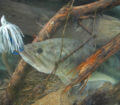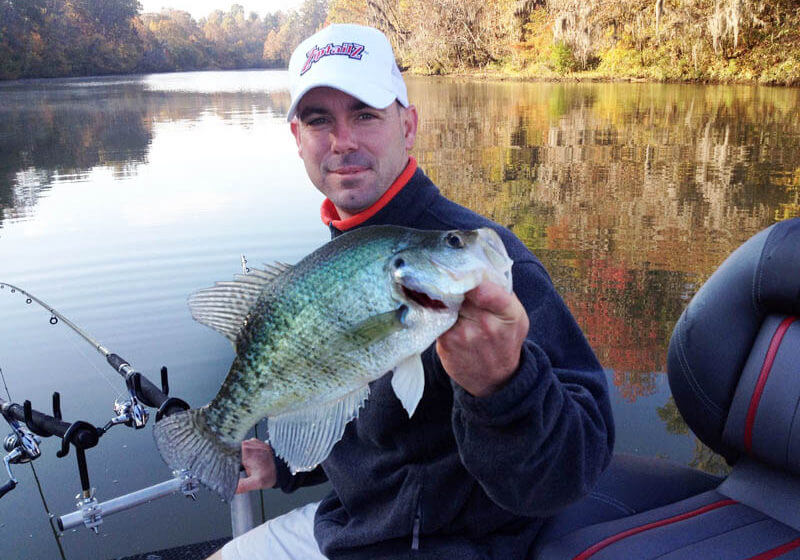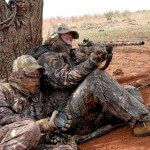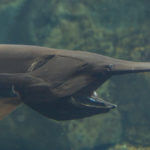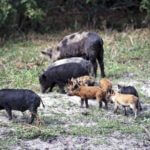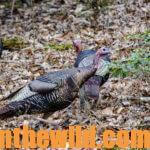Editor’s Note: How long has it been since you’ve enjoyed delicious-tasting fresh crappie? Are you sore from sitting in a tree stand from dawn until after dark chasing deer? Consider the possibility of taking your fishing boat to your hunting club this weekend and catching a mess of crappie in the middle of the day from 9:00 am to 2:00 pm. To find out why you should crappie fish at this time of year while everyone else is deer hunting, we talked with Jonathan Phillips of Team Phillips Guide Service (334-391-9735; jphillips10442@yahoo.com; https://www.facebook.com/jonathan.phillips.1675), who guides on the Alabama River, the Coosa River and Lake Jordan in central Alabama, but competitively fishes for crappie all across the South.
 Lake Jordan has a large population of black crappie, and the Alabama River is known more for white crappie. So, I fish differently on Lake Jordan than I do on the Alabama River. I usually fish smaller baits on Lake Jordan for black crappie than I do on the Alabama River for white crappie. The Lake Jordan black crappie tend to prefer bait that’s about 1 to 1-1/2 inches long. On the Alabama River, there’s probably an equal amount of black and white crappie, but the crappie there in the river seem to prefer larger baits. When Lake Jordan is clear, I use really-small line and very-small baits. However, on the Alabama River, I can fish with heavier line and bigger baits.
Lake Jordan has a large population of black crappie, and the Alabama River is known more for white crappie. So, I fish differently on Lake Jordan than I do on the Alabama River. I usually fish smaller baits on Lake Jordan for black crappie than I do on the Alabama River for white crappie. The Lake Jordan black crappie tend to prefer bait that’s about 1 to 1-1/2 inches long. On the Alabama River, there’s probably an equal amount of black and white crappie, but the crappie there in the river seem to prefer larger baits. When Lake Jordan is clear, I use really-small line and very-small baits. However, on the Alabama River, I can fish with heavier line and bigger baits.
I take guide trips all winter long. I like to fish during the winter months because I generally can produce good numbers of really-big crappie. One of the secrets of being able to produce crappie for my customers throughout the winter is finding the crappie on my depth finder. But just because I locate the crappie, I know they’re down there, and I know we can put our baits right in front of them doesn’t mean that the crappie will bite. If the crappie just have eaten, they more than likely won’t eat again for 2-3 hours. That’s the reason I try to have three to five places where I know the crappie are holding during the winter months. If one school’s not biting, we can move to another school. An hour or two later, we may return to the first school and try them again. Most of the time, an inactive school of crappie eventually will become active at some time during the day. All you have to do is be there at that time and put baits they want in front of them.
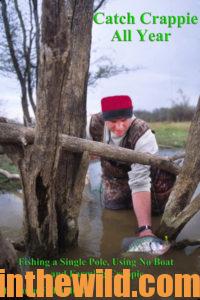
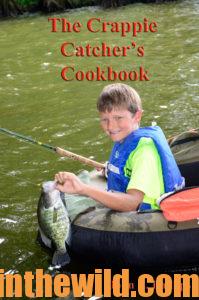 To learn more about crappie fishing, check out John E. Phillips’ book, “Catch Crappie All Year: Fishing a Single Pole, Using No Boat and Farming Crappie,” available in Kindle and paperback at http://amzn.to/16AzIZi. For a free eBook, “The Crappie Catcher’s Cookbook,” go to https://www.emailmeform.com/builder/form/eb81136oQJ1g2fe9q6RNd73jh.
To learn more about crappie fishing, check out John E. Phillips’ book, “Catch Crappie All Year: Fishing a Single Pole, Using No Boat and Farming Crappie,” available in Kindle and paperback at http://amzn.to/16AzIZi. For a free eBook, “The Crappie Catcher’s Cookbook,” go to https://www.emailmeform.com/builder/form/eb81136oQJ1g2fe9q6RNd73jh.

